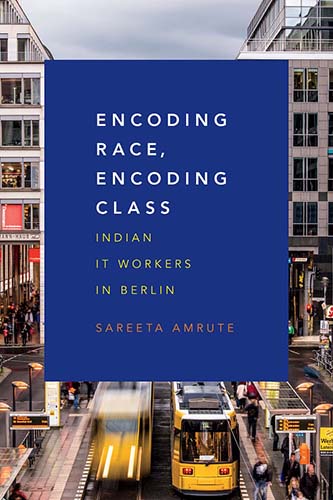Editor’s note: This is the second entry in the Second Project Series. This series explores an often undiscussed moment in professionalization: the shift from the research you began as a graduate student to the new work undertaken as an early- or mid-career scholar. This series is especially interested in personal journeys and institutional features that enabled or constrained this transition. If you are interested in contributing, please contact Lisa.
There is a scene in season two of Mr. Robot where a smart house goes bad. Lights flicker, the stereo plays loudly, then cuts off, the alarm systems blares incessantly, and the temperature of the house drops. The wealthy inhabitant flees her domicile in dread. To her management company’s suggestion on how to fix the problem, she screams, “unplug what? Everything is inside the walls!”
This scene condenses anxieties about the dark manipulable side of lifestyle technologies into one long jump cut of discomfiture. Indeed, when hackers can infect your thermostat with malware and demand ransom, these fears are re-legitimized.
When I watch this scene, I see something else. The glitches in the house make me think of the ripples that disrupt the smooth functioning of our digital everyday. Those ripples are good things. They indicate that the data that surrounds us is uneven, imperfect, sloppy, full of holes. What if, instead of worrying about holes, we celebrate them? That question is at the heart of my next project, tentatively called The Widow and the Orphan.
I first began thinking about the goodness of digital mess when writing about my first project, an ethnographic monograph called Encoding Race, Encoding Class: Indian IT Workers in Berlin. I spent time with a programmer from India who would talk about why coders write messy code and fail to leave good comments. Though these lapses created long-term problems for a coding project, he spoke with deep understanding about coders who fix code just enough, and for coders who refuse to leave comments about their code, so that they can extend their visa-backed, short-term jobs. These programmers try to make themselves less replaceable by not leaving directions for the next coder who will come along.

Sloppy code is inconvenient. But sloppy code is also seamful (Vertesi 2014, Clamers and Galani 2004), that is, it works with and across coding infrastructures. It can inject aspiration and alternative intent into the assumed smooth functioning of the digital objects that surround us, a point this manager understood very well and supported. Embracing seamfulness means playing with all the possible ways that systems can be patched together and acknowledging that even the most well-organized ones are messy underneath.
The possibilities of messy data similarly inform my next project. In a study of orphanhood, women’s education, and women’s rights in late colonial India, I will use what Catherine D’Ignazio calls feminist digital visualization to make plain not only what is known in this story but also what is rumor, unknowable, and messy. These moments of uncertainty, which are revealed through investigating archives, reading news accounts, exploring family archives, and taking oral histories, are simultaneously the moments when new political movements, different opportunities, and submerged histories are produced.
Common lore among anthropologists is that we begin by studying a far away place, and then move back to study home. But there may be some misconceptions about why we do this. The reason may neither be the flagging energy of age, nor the competing demands on an anthropologists’ time made by children, students, and the increased bureaucratic tasks of the neoliberal university. For my part, working in Berlin made clear in practice what I had only grasped in theory—that the division between disciplines, like anthropology and history; between time periods, like the past and the present; and even among subjects, like the self and the other, are muddled and reestablished over and again. This recognition of taxonomic sloppiness allowed me to think closer to home. The next project will use the lives of my maternal grandmother and grandfather to tell a seamful story. And the methods I will employ will range from oral history to ethnographic description to archival analysis.
By embracing sloppiness as a method to follow how lives unwind, and as a way to let family history into the telling of social narratives, what started as a moment of clarity about the opportunities afforded by unruly data is morphing into a major obsession. As The Widow and the Orphan develops, this process will no doubt be obscured by the surprises that come from working through this new material. In the end, the new project will circle back to the present, as I hope to show that thinking about the holes in what we know tells us much about the opportunities in the present for political agitation that we as of yet cannot see.
Messy data is good. It can reveal something, if we can figure out how to think about it. The result, I hope, will be an effectively sloppy next project.
Vertesi, Janet 2014. “Seamful Spaces: Heterogeneous Infrastructures in Interaction.” STHV 39(2)264-84. http://sth.sagepub.com/content/39/2/264.abstract
Chalmers, Matthew and Galani, Areti, 2004. “Seamful Interweaving: Heterogeneity in the Theory and Design of Interactive Systems.” Proceedings of ACM Symposium on Designing Interactive Systems:243-252. http://eprints.gla.ac.uk/3457/1/Seamful_Interweaving.pdf

2 Comments
A very good piece, congrats. I could easily frame myself on it. 🙂
thank you!
1 Trackback